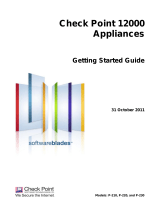
D-Link EasySmart Switch User Manual
i
i
i
i
Reboot Device
.......................................................................................................................................... 19
Reset System
........................................................................................................................................... 19
Firmware Backup & Upgrade
................................................................................................................... 19
Configuration Backup & Restore
.............................................................................................................. 20
Function Tree
............................................................................................................................................... 21
Device Information
.................................................................................................................................... 21
System > System Settings
....................................................................................................................... 22
System > Port Settings
............................................................................................................................. 23
System > Trap Settings For SmartConsole
.............................................................................................. 23
System > Password Access Control
........................................................................................................ 24
L2 Features > Port Trunking
..................................................................................................................... 24
L2 Features > IGMP Snooping
................................................................................................................. 24
L2 Features > Port Mirroring
.................................................................................................................... 25
L2 Features > Loopback Detection
.......................................................................................................... 25
L2 Features > Statistics
............................................................................................................................ 26
L2 Features > Surveillance VLAN
............................................................................................................ 27
L2 Features > Voice VLAN
....................................................................................................................... 28
L2 Features > Cable Diagnostics
............................................................................................................. 28
VLAN > 802.1Q VLAN
.............................................................................................................................. 29
VLAN > 802.1Q Management VLAN
........................................................................................................ 31
VLAN > Port-Base VLAN
.......................................................................................................................... 31
QoS > 802.1p Default Priority
................................................................................................................... 32
QoS > Storm Control
................................................................................................................................ 33
QoS > Bandwidth Control
......................................................................................................................... 33
Security > MAC Address Table > Static MAC
.......................................................................................... 34
Security > MAC Address Table > Dynamic Forwarding Table
................................................................. 35
Appendix A - Ethernet Technology .............................................................................................................. 37
Gigabit Ethernet Technology
....................................................................................................................... 37
Fast Ethernet Technology
............................................................................................................................ 37
Switching Technology
.................................................................................................................................. 37
Appendix B - Technical Specifications
....................................................................................................... 38
Hardware Specifications
.............................................................................................................................. 38
Key Components / Performance
.............................................................................................................. 38
Port Functions
.......................................................................................................................................... 38
Physical & Environment
........................................................................................................................... 38
Emission (EMI) Certifications
................................................................................................................... 38
Safety Certifications
.................................................................................................................................. 38
Features
....................................................................................................................................................... 38
L2 Features
.............................................................................................................................................. 38
VLAN
........................................................................................................................................................ 38
QoS (Quality of Service)
........................................................................................................................... 38
Management
............................................................................................................................................. 38
Power Saving
........................................................................................................................................... 38
Appendix C – Rack mount Instructions
...................................................................................................... 39




















